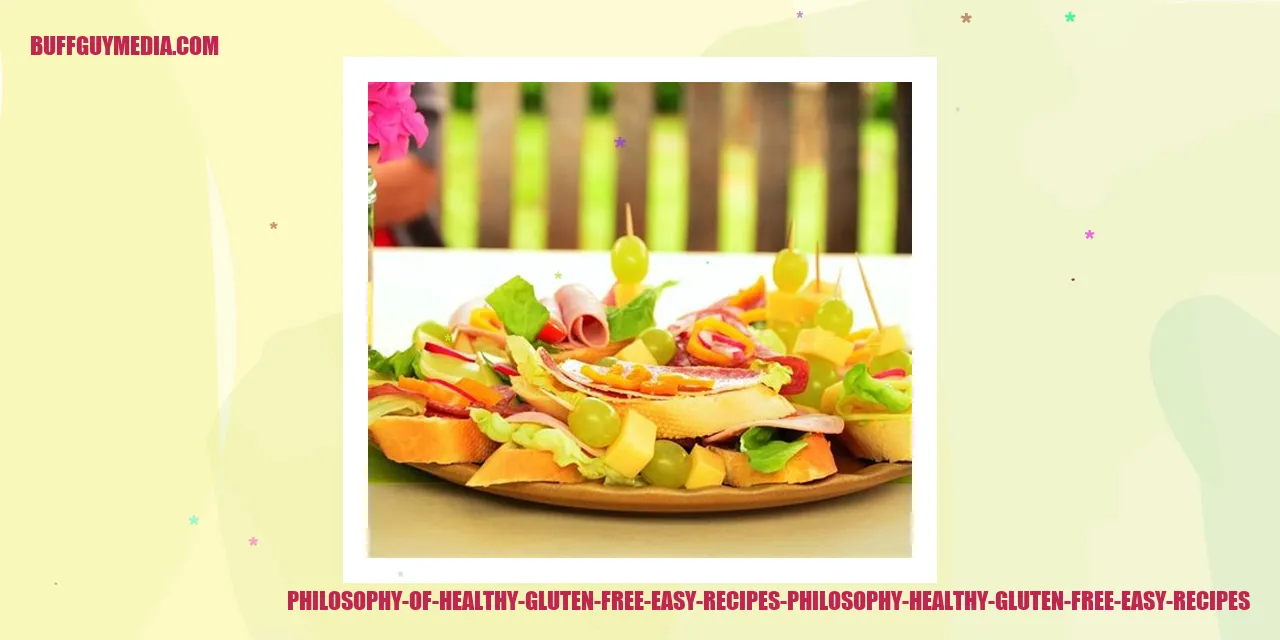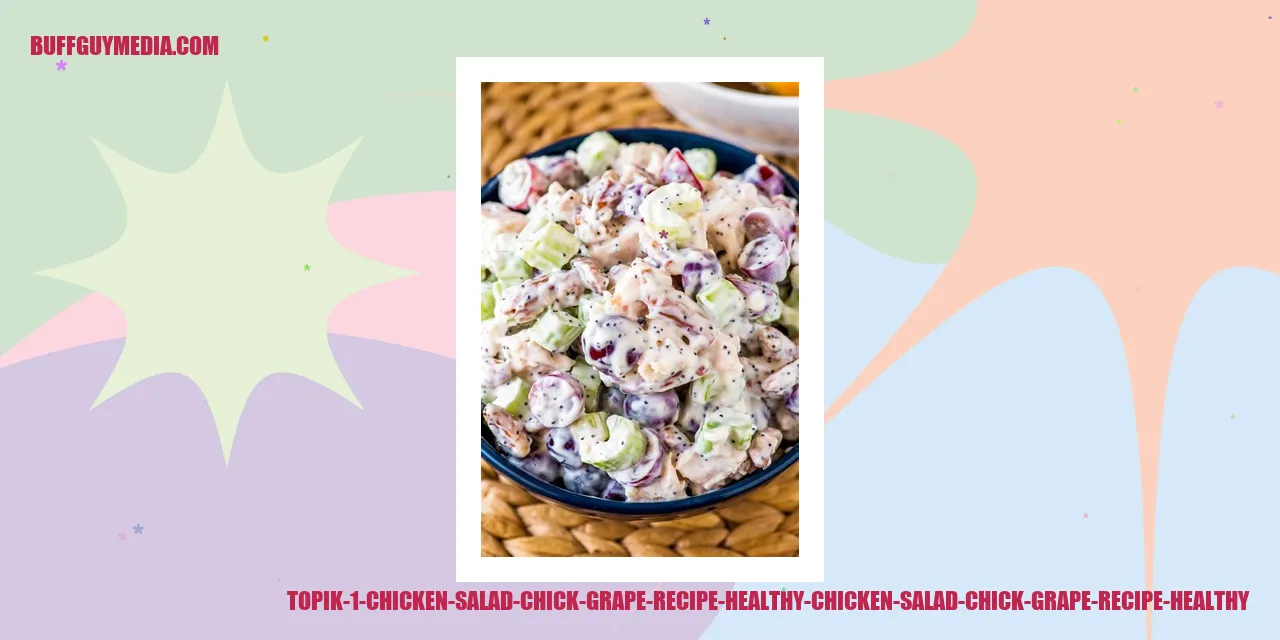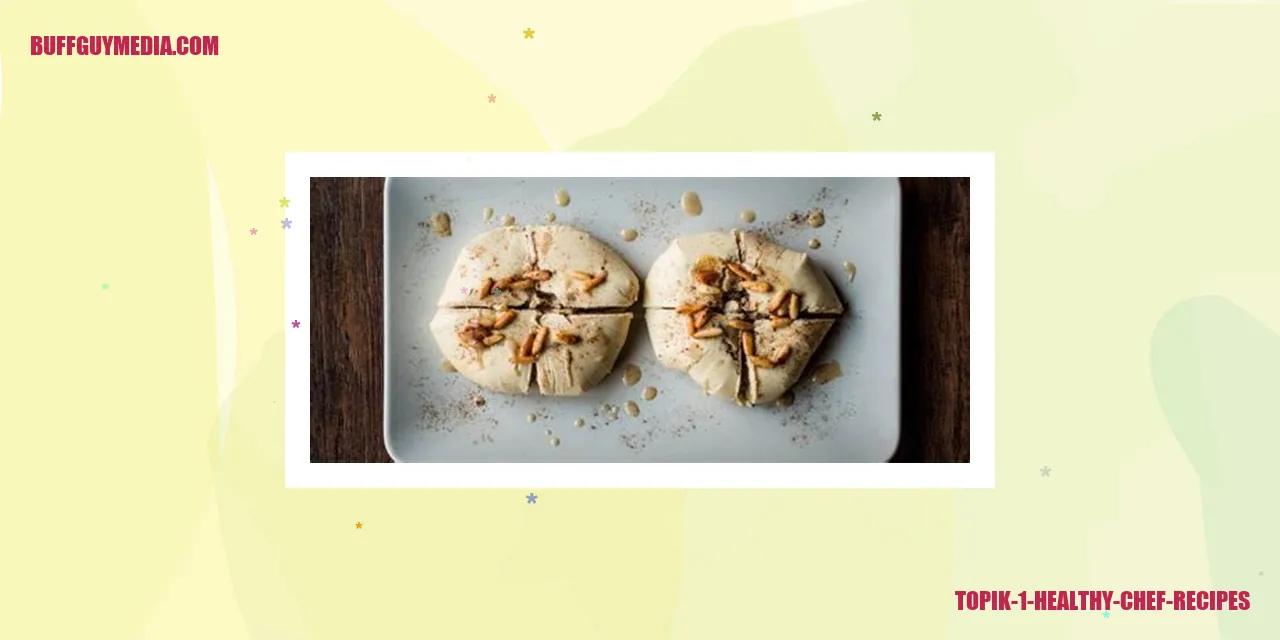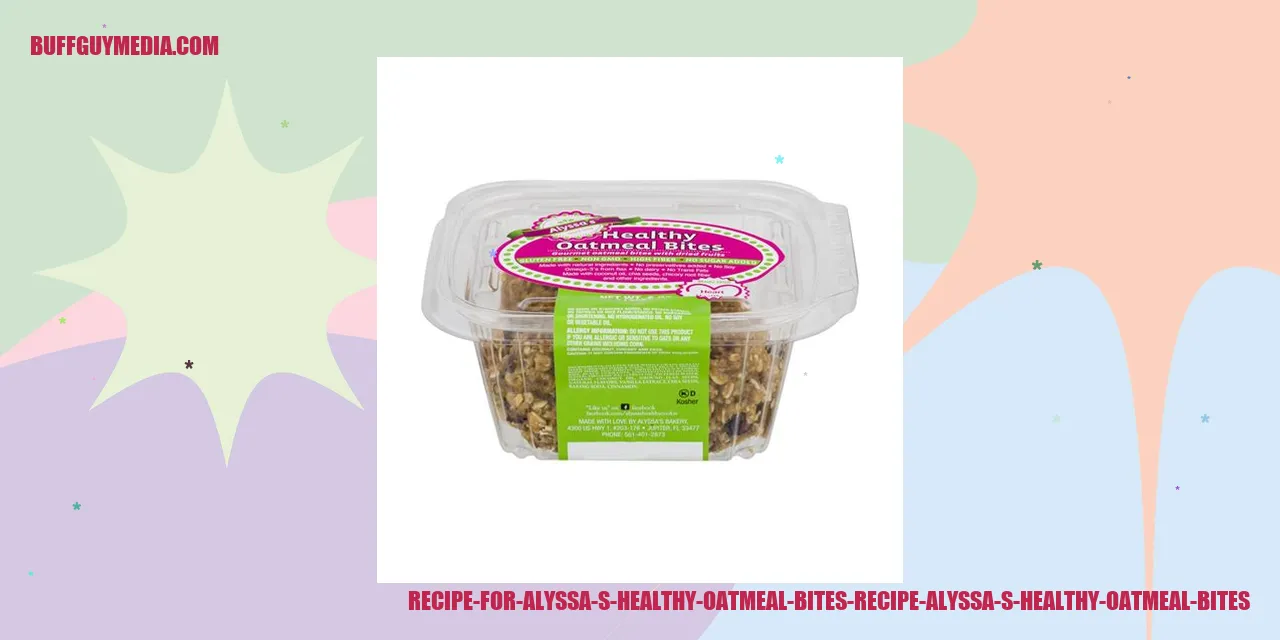Kaylie’s Healthy Recipes – Delicious and Nutritious Meals for a Healthier Lifestyle
The Tempting World of Kaylie’s Healthy Recipes
Delicious and Nutritious Breakfast Ideas
Are you a fan of kick-starting your mornings with a delectable and nourishing meal? Look no further than Kaylie’s Healthy Recipes. Our extensive collection of breakfast recipes offers a plethora of mouthwatering options that will energize your body and tantalize your taste buds. Whether you crave something sweet or savory, we have the perfect recipe to suit your preferences.
Elevate Your Midday Meal with Flavorful Lunch Creations
Tired of the same monotonous lunch choices? Break free from the ordinary and elevate your midday meal with Kaylie’s Healthy Recipes’ vibrant and flavorful lunch ideas. From refreshing salads bursting with colors and flavors to satisfying sandwiches brimming with tasty fillings, our recipes will make your lunch break an eagerly awaited moment every day.
A Wholesome and Satisfying Dinner Experience
Looking to impress your loved ones or guests with a wholesome and satisfying dinner? Look no further than Kaylie’s Healthy Recipes. Our diverse range of dinner options will leave everyone at the table craving for more. Indulge in succulent grilled chicken or dive into aromatic vegetarian dishes; our recipes are designed to elevate your dining experience and satisfy your culinary cravings.
Guilt-Free Snacks That Pack a Punch
Craving a tasty treat to quell your snack cravings without sacrificing your healthy eating habits? Kaylie’s Healthy Recipes offers an array of guilt-free snack ideas that are both delicious and nutritious. From homemade energy bars packed with natural goodness to crispy veggie chips, our snacks will keep you fueled and satisfied throughout the day.
A Holistic Approach to Healthy Eating
At Kaylie’s Healthy Recipes, we firmly believe that eating well should never mean compromising on taste. Our recipes are meticulously crafted to ensure a harmonious balance of nutrients and flavors. We source wholesome and fresh ingredients to create dishes that nourish your body while satisfying your palate, making healthy eating a joyful and fulfilling experience.
What sets us apart is our dedication to providing detailed and easy-to-follow instructions. Whether you are an experienced home cook or a novice in the kitchen, our recipes are designed to be simple to recreate. Alongside our recipes, you’ll find helpful tips and tricks to enhance your culinary skills and expand your knowledge.
But our commitment to healthy eating goes beyond recipes. We provide comprehensive nutritional information for each dish, empowering you to make informed choices about your dietary intake. We believe that knowledge is key when it comes to maintaining a healthy and nourishing lifestyle.
So why wait? Embark on a journey towards a healthier lifestyle with Kaylie’s Healthy Recipes. Explore our enticing breakfast, lunch, dinner, and snack recipes today, and unlock a world of delicious possibilities that will leave you satiated, energized, and excited about healthy eating.
Discover Healthier Ingredient Alternatives
READMORE]]
Transforming Unhealthy Ingredients
When it comes to culinary creations, you have the power to make healthier choices by substituting unhealthy ingredients. Rather than using refined white sugar, why not try incorporating natural sweeteners such as honey, maple syrup, or dates? These alternatives not only provide sweetness but also offer valuable nutrients. Furthermore, instead of relying on butter or margarine, consider experimenting with healthier fats such as avocado, coconut oil, or olive oil. These alternatives are rich in essential fatty acids and can significantly enhance the nutritional profile of your dish.
Mastering Ingredient Measurement Conversions
Also read:
ESP Pre Workout: Boost Your Performance and Energy
Dr Nowzaradan 1200 Calorie Diet Plan PDF
In the realm of cooking and baking, understanding ingredient measurement conversions is essential for achieving consistent and delectable results. Embrace the challenge of deciphering unfamiliar measurements in recipes. For example, if a recipe calls for one cup of flour, know that it is equivalent to approximately 120 grams or 4.25 ounces. Familiarizing yourself with these conversions empowers you to modify recipes according to your preferences and ensure precise outcomes.
Exploring Substitutions for Dietary Restrictions
Individuals with specific dietary restrictions or allergies can still savor a wide range of flavors by discovering suitable ingredient substitutions. Those who are lactose intolerant or follow a vegan lifestyle can swap dairy products with plant-based alternatives like almond milk, coconut milk, or soy milk. Furthermore, individuals who are gluten intolerant or have celiac disease can embrace gluten-free flour blends such as almond flour, quinoa flour, or rice flour as a replacement for wheat flour. These substitutions open the door to delightful and satisfying meals while accommodating individual dietary needs.

Effective Strategies for Meal Planning
Discover Weekly Meal Prep Ideas
Streamline your daily routine and save valuable time in the kitchen with strategic meal planning tips. One powerful approach is to dedicate a specific time each week to plan and prepare your meals in advance. By cooking and portioning your meals in bulk, you can guarantee a variety of nutritious options that are easily accessible throughout the week. Some excellent ideas for weekly meal prep include prepping ingredients beforehand, batch cooking, or creating freezer-friendly meals that can be conveniently reheated.
Create Well-Balanced Meals
When it comes to meal planning, striking the right balance is crucial for providing your body with the essential nutrients it needs. Aim to incorporate a diverse range of food groups into each meal, including lean proteins, whole grains, fresh fruits, vegetables, and healthy fats. This approach ensures that you meet your daily nutritional requirements and promotes overall well-being and vitality.
Effective Portion Control Strategies
Implementing portion control strategies is paramount during the meal planning process, particularly if your goal is weight management. Being mindful of portion sizes across different food groups helps prevent overeating. An effective technique is to utilize smaller plates and bowls, creating a visual perception of larger portions. Additionally, listen to your body’s hunger and fullness cues, eating until you feel satisfied but not excessively stuffed.
Meal Planning to Achieve Weight Loss
If you’re aiming for weight loss, meal planning can be a powerful tool in your journey to better health. By pre-planning your meals, you can ensure that you have healthy choices readily available and avoid impulsive, unhealthy decisions. Incorporating a well-balanced combination of proteins, fibers, and healthy fats into your meals helps keep you feeling full and satisfied. Furthermore, focus on increasing your intake of fruits and vegetables to boost the nutrient density of your meals and support your weight loss efforts.
Meal planning offers numerous benefits, including enhanced organization, time savings, and healthier decision-making. By implementing these effective meal planning strategies, you pave the way for success in achieving your health and wellness goals.
A Guide to Healthier Cooking Techniques

Optimal Methods for Healthy Cooking
When it comes to preparing nutritious meals, it’s essential to embrace cooking techniques that preserve the goodness in our ingredients while minimizing the use of unhealthy fats. Here are some advantageous methods for promoting health in the kitchen:
- Steaming: Steaming food retains its natural flavors and nutrients by gently cooking it over hot steam, preserving vital water-soluble vitamins and minerals.
- Grilling: Adding flavor without excessive oil, grilling allows excess fat to drip off meat, resulting in leaner and healthier dishes.
- Baking: A dry heat cooking technique, baking is ideal for creating healthier versions of favorite dishes without the need for excessive oil, making it perfect for those mindful of their fat intake.
- Sautéing: By swiftly cooking food over high heat with a small amount of oil, sautéing enables ingredients to retain their natural flavors while minimizing oil usage.
Demystifying Heat Levels
A comprehensive understanding of heat levels plays a vital role in successful cooking. Different culinary techniques require specific heat levels to achieve desired results. Below are key heat levels and their intended uses:
- Low Heat: Suited for simmering, slow-cooking, and gently heating delicate ingredients, low heat is commonly used for sauces or delicate seafood dishes.
- Medium Heat: Perfect for sautéing, stir-frying, and cooking meats, medium heat adequately cooks ingredients without risking burns.
- High Heat: Best for searing, grilling, and roasting, high heat allows for quick cooking and the development of a delightful crispy exterior on meats and vegetables.
Enhancing Flavor with Herbs and Spices
Herbs and spices are essential elements in culinary creations as they infuse depth, flavor, and aroma into our dishes. They also offer numerous health benefits, packed with antioxidants and other properties beneficial to our well-being. Let’s explore some popular herbs and spices and their typical uses:
- Basil: Adding a fresh and aromatic touch, basil complements tomatoes, pasta, and salads perfectly.
- Cumin: With its warm and earthy flavor profile, cumin is a fantastic addition to savory dishes like soups, stews, and curries.
- Thyme: Offering a subtle and woody aroma, thyme serves as an ideal seasoning for roasted poultry, vegetables, and sauces.
- Turmeric: Known for its vibrant yellow color and warm, slightly bitter taste, turmeric is commonly used in curries and rice dishes.
Baking Tips for Healthier Recipes
Baking enjoys popularity as a preferred cooking method for many, and with a few simple tweaks, you can make your baked goods healthier without compromising on taste. Here are some useful baking tips for preparing healthier recipes:
- Replace all-purpose flour with whole wheat flour to increase the fiber content of your baked goods.
- Reduce the amount of sugar in your recipes by using natural sweeteners like honey or maple syrup.
- Swap unhealthy fats like butter or margarine with more wholesome alternatives such as applesauce, mashed bananas, or Greek yogurt.
- Incorporate fruits and vegetables into your baked goods to add nutrients and moisture.
- Experiment with alternative ingredients such as almond flour or coconut flour for gluten-free options.
Remember, embracing healthier cooking techniques not only enhances the nutritional value of your meals but also leads to a more enjoyable culinary experience. So, make sure to incorporate these tips into your cooking routine and relish the benefits of a healthier lifestyle.]

Discover Exciting Meal Ideas to Delight Your Palate
Inspiring Seasonal Recipes
Craving a change from your usual meals and in need of new ideas? Look no further! We have a delectable collection of recipes that will make the most of the seasonal bounty. From crisp summer salads to comforting winter stews, our seasonal recipe ideas will infuse your table with exciting flavors throughout the year. Prepare to relish the very best that each season has to offer!
Effortless and Tasty Recipes
Short on time but still want to indulge in a homemade feast? Our quick and easy recipes are the answer for busy individuals like you. With simple ingredients and straightforward instructions, you can whip up a mouthwatering dish in a jiffy. Whether you’re in the mood for a hearty pasta or a flavorful stir-fry, these recipes will satiate your hunger and save you precious minutes.
Convenient One-Pot and Sheet Pan Meals
Tired of facing a mountain of dirty dishes after each meal? We have the solution: one-pot and sheet pan meals! These recipes are designed to minimize cleanup while maximizing taste. With all the ingredients cooked in a single pot or on a sheet pan, you can enjoy a scrumptious meal without the hassle of multiple pots and pans to wash. From savory stews to roasted vegetables, these hassle-free wonders will simplify your cooking routine.
A Taste of Global Delicacies
Ready to embark on a culinary expedition around the world? Our collection of international cuisine recipes will take your taste buds on an unforgettable journey. Delve into the vibrant flavors of Mexican tacos, the aromatic spices of Indian curries, the delicate balance of Japanese sushi, and much more. With our detailed recipes and invaluable tips, you can easily recreate authentic dishes from various cuisines right in the comfort of your own kitchen.
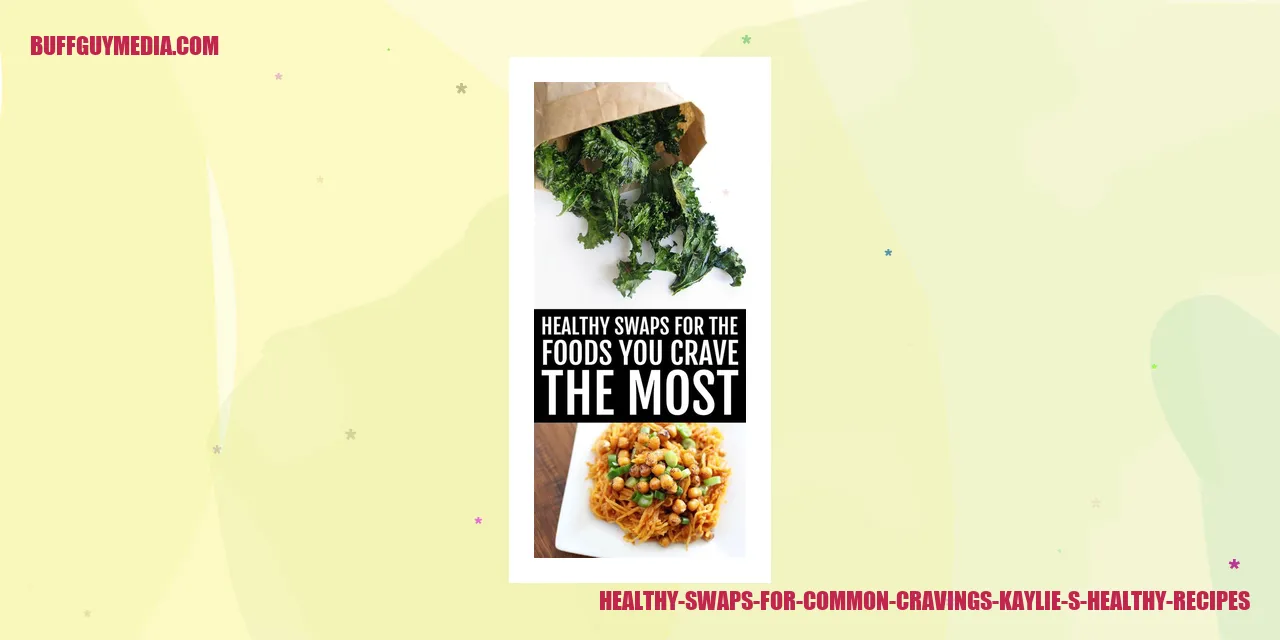
Discover Healthy Alternatives for Your Cravings
Exploring Healthier Dessert Options
Indulging in sweet treats can be a challenge when striving for a holistic well-being. However, there are various alternatives that can satisfy your cravings without compromising your health. Instead of opting for desserts loaded with sugar and excessive calories, consider trying these healthy alternatives:
- Opt for a refreshing Fruit Salad blended with a colorful mix of fresh fruits, providing natural sweetness along with essential vitamins and minerals.
- Build a nutritious Yogurt Parfait by layering yogurt, granola, and fresh berries. This creamy and crunchy dessert is packed with protein and fiber.
- Swap a sugary dessert for a delightful Chia Seed Pudding. Mix chia seeds with your preferred milk and sweeten it with honey or maple syrup. Allow it to set overnight for a delicious and wholesome pudding.
Embracing Low-Calorie Snack Options
Cravings for snacks can be managed effectively by choosing low-calorie alternatives, ensuring a balanced diet. Here are some guilt-free snack options to satisfy your cravings:
- Enjoy a bowl of air-popped Popcorn, which provides a satisfying crunch without the excess calories. Avoid adding extra butter or salt for a healthier choice.
- Pair fresh and crisp vegetables like carrots, cucumber, and bell peppers with a portion of Hummus for a delicious snack that is rich in vitamins and fiber.
- Opt for a cup of plain Greek Yogurt topped with fresh fruits or a drizzle of honey. This protein-packed snack will keep you feeling satisfied for longer periods.
Replacing High-Sugar Beverages
Sugary drinks can contribute to unnecessary calorie intake without offering any nutritional value. Instead of reaching for sodas or sweetened beverages, consider these healthier alternatives:
- Infuse your Water with slices of lemon, cucumber, or berries for a refreshing and flavor-packed twist without any added sugars.
- Indulge in a cup of herbal Tea such as chamomile or peppermint. These soothing and hydrating alternatives are free from added sugars.
- If you desire fizziness, choose Sparkling Water over soda. Add a splash of freshly squeezed citrus juice for a refreshing and low-calorie beverage.
Substituting Fried Foods with Healthier Options
Fried foods may be tempting, but their high unhealthy fat content can negatively impact your overall well-being. Instead, try these healthier alternatives:
- Enjoy Baked Sweet Potato Fries by slicing sweet potatoes into sticks, seasoning them with your preferred herbs and spices, and baking them until crispy. This delicious alternative is packed with nutrients.
- Opt for Grilled Chicken Breast instead of fried chicken to reduce your intake of unhealthy fats while still savoring a flavorful and protein-rich meal.
- Create your own Veggie Chips by slicing vegetables like zucchini, beetroot, or kale, seasoning them, and baking them until crispy perfection. These wholesome alternatives offer a healthier option to satisfy your craving for chips.

Meal Preparation for Individuals with Hectic Schedules
Time-Saving Tips for Meal Preparation
In the fast-paced world we live in today, finding time to cook nutritious meals can be a challenge for individuals leading busy lives. However, by implementing effective meal prep strategies, individuals can ensure access to healthy food choices without sacrificing their precious time. Discover these time-saving meal prep tips:
- Advance meal planning: Invest a few minutes each week to create a comprehensive meal plan. This will help you determine the necessary ingredients and streamline your shopping routine.
- Bulk ingredient preparation: Dedicate a few hours during your free time, such as weekends, to chop vegetables, marinate proteins, and cook grains in large quantities. This upfront effort will significantly reduce your prep time on hectic weekdays.
- Optimal use of slow cookers or Instant Pots: These kitchen appliances are a lifesaver for busy individuals. Simply add your prepped ingredients in the morning and return home to a mouthwatering, ready-to-eat meal.
Achieving Meal Preparation Efficiency through Ingredient Prepping
One of the fundamental strategies for efficient meal prep for busy individuals is prepping ingredients in advance. By setting aside time to wash, chop, and portion ingredients ahead of schedule, you can save invaluable minutes throughout the week. Explore these ingredient prepping ideas:
- Thoroughly clean and chop vegetables: Ensure vegetables such as carrots, bell peppers, and broccoli are washed and cut into bite-sized pieces. Store them in airtight containers or sealed bags for quick and convenient access.
- Prepare grains and proteins in advance: Pre-cook grains like quinoa or brown rice as well as proteins such as chicken, lean beef, or tofu. Portion them into meal-sized containers and refrigerate or freeze them until needed.
- Create homemade sauces or dressings: Whip up batches of your preferred sauces or dressings, such as tomato sauce or vinaigrette. Store them in jars or bottles for hassle-free use throughout the week.
Effective Freezing and Storage Techniques for Prepared Meals
For individuals leading busy lives, the practice of freezing and storing prepared meals can be a game-changer. It allows for a diverse range of homemade, nutritious meals to be readily available whenever required. Consider the following tips for freezing and storing prepared meals:
- Invest in high-quality meal prep containers: Opt for durable containers that are leak-proof and capable of enduring freezing temperatures without any issues.
- Label and date your meals: Avoid any confusion by labeling each container with the name of the meal and the date it was prepared.
- Organize your freezer effectively: Arrange your frozen meals systematically to ensure easy access and avoid creating unnecessary messes.
- Adhere to proper reheating guidelines: To prevent any potential health risks, make sure you reheat your frozen meals to the recommended internal temperature.
Essential Meal Prep Containers and Tools
To achieve effective meal prep for individuals leading busy lives, the availability of suitable containers and tools is vital. Consider the following recommendations:
- Meal prep containers free from BPA: Select containers that are microwave-safe, dishwasher-safe, and freezer-safe, while also being free from harmful BPA.
- Reusable silicone bags: Invest in eco-friendly alternatives to single-use plastic bags, such as reusable silicone bags, for storing prepped ingredients.
- Food scale and measuring cups: Accurate measurement of ingredients is essential for portion control and well-balanced meals. Utilize a food scale and measuring cups to achieve desired precision.
- Sharp knives and cutting boards: Ensure efficient and safe ingredient prepping by investing in high-quality knives and cutting boards.
By incorporating these time-saving meal prep tips, efficient ingredient prepping techniques, effective freezing and storage practices for prepared meals, and appropriate meal prep containers and tools, individuals leading busy lives can prioritize healthy eating amidst their demanding schedules. Start planning and prepping today to enjoy nutritious meals without compromising your valuable time.]

Tips for Maintaining a Healthy Diet without Breaking the Bank
Affordable Options for Nourishing Groceries
Staying healthy and on budget is possible! With some clever shopping strategies, you can discover cost-effective yet nutritious foods. Seek out sales and deals on fresh fruits, vegetables, and whole grains. Purchasing in bulk is a smart long-term money-saving practice. Moreover, frozen or canned produce can be equally nutritious at a lower expense.
Smart Meal Planning to Minimize Food Waste
Taking the time to plan your meals in advance is a valuable money-saving tactic that also reduces food waste. Make a shopping list based on your meal plan to avoid impulsive purchases and ensure that you only buy what you need. Incorporating leftovers into new dishes or freezing them for future consumption not only saves you dollars but also reduces food waste.
Economical Cooking with Kitchen Staples
Maximize your budget by making the most of kitchen staples when preparing meals. Rice, beans, lentils, and pasta are wallet-friendly options that can form the foundation of many dishes. Combine them with affordable vegetables, spices, and herbs to create flavorful and nutritious meals. Don’t underestimate the power of simple recipes, as they can be just as tasty as more elaborate ones.
Grow Your Own Fresh Herbs and Vegetables
Want to save money and enjoy the satisfaction of homegrown produce? Consider growing your own herbs and vegetables, even if you have limited space. Pots or small containers on your balcony or windowsill can suffice. The taste of freshly harvested ingredients will enhance the flavors of your dishes and contribute to a lower grocery bill.
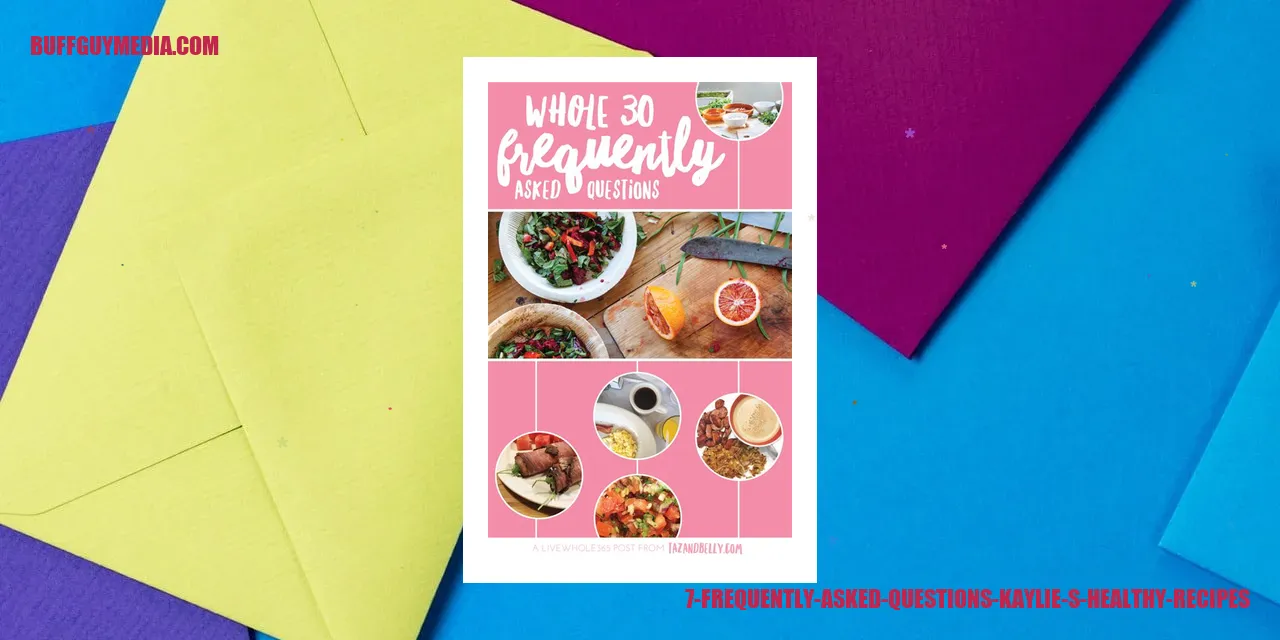
Frequently Asked Questions
1. Why is Regular Exercise Important?
Regular physical activity holds great significance in maintaining overall health and wellness. Engaging in consistent exercise routines helps improve cardiovascular endurance, strengthen muscles, enhance flexibility, and manage body weight. It also contributes to mental well-being by reducing stress and anxiety levels.
2. How do I Incorporate Healthy Eating Into My Lifestyle?
Incorporating healthy eating habits into daily routines involves making informed choices and maintaining a well-balanced diet. This includes consuming an array of fruits, vegetables, whole grains, lean proteins, and healthy fats. Planning meals, practicing portion control, and staying adequately hydrated are also vital components of healthy eating.
3. What are the Benefits of Adequate Hydration?
Ensuring sufficient water intake is crucial for optimal bodily functions. Water helps hydrate the body, regulate internal temperature, eliminate toxins, support digestion, and promote healthy skin. It also aids in weight management and can prevent dehydration and related health issues.
4. How can I Effectively Manage Stress?
Effective stress management techniques involve practicing relaxation exercises such as deep breathing, meditation, and yoga. Engaging in physical activities, maintaining a healthy lifestyle, setting realistic goals, seeking support from loved ones, and pursuing enjoyable hobbies or activities are also helpful in managing stress.
5. What are the Advantages of a Well-Balanced Work-Life Routine?
A well-balanced work-life routine allows individuals to achieve harmony between personal and professional aspects. This promotes overall well-being, reduces the risk of burnout, increases productivity, and enhances relationships. It allows time for rest, recreation, self-care, and pursuing interests outside of work.
6. How can I Enhance Sleep Quality?
Improving sleep quality involves adopting good sleep hygiene practices. This includes maintaining a consistent sleep schedule, creating a comfortable sleep environment, avoiding stimulating activities or screens before bedtime, practicing relaxation techniques, and limiting caffeine and alcohol intake.
7. What are the Benefits of Mindfulness and Meditation?
Mindfulness and meditation practices offer various benefits for mental and emotional well-being. They help reduce stress, improve focus and concentration, enhance self-awareness, promote emotional stability, and cultivate a sense of calm and relaxation. Regular mindfulness and meditation can lead to overall improved mental health.



